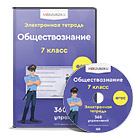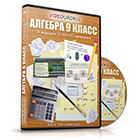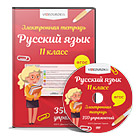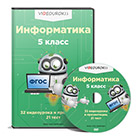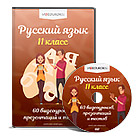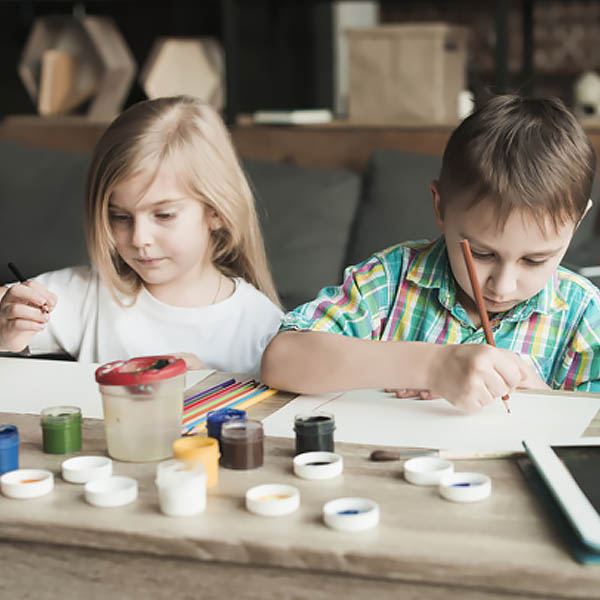THEORETICAL FUNDAMENTALS OF DEVELOPMENT OF PEOPLE'S INSTRUMENTS AND PERFORMING ARTS IN UZBEKISTAN
Botirova Khilola Tursunbaevna, Associate Professor, Faculty of Art Studies, Andijan State University
Annotation: This article describes the scientific work of composers and creators, the musical views of the great thinkers of the East, the attention and recognition of music and art schools, the views of scholars on the performing arts. The theory of music, which has been studied by musicologists for years, and the factors that are important in the development of performance were also discussed.
Keywords: art, performance, legend, instrument, music, ability, performance, creator, composer.
Introduction. Among all the musical arts in our lives, the art of music has accompanied the way of life of people for many centuries and it is an art form that reflects the thoughts, dreams and hopes of the people, their labor activities, feelings and experiences. When we look at our historical sources, there is information that the art of performance did not enter our lives yesterday or today, but the life of a person also entered our legends and myths under the performance of musical melodies on the flute. The subject of music is covered in more hadiths. Various scientific studies have shown that there are two main reasons for resistance to music. Each cause corresponds to a specific historical period and is associated with political-ideological as well as cultural development.
The first resistance to music dates back to the XII-XIII centuries. Although Islam did not oppose Christianity, Judaism, or Zoroastrianism, it waged a ruthless struggle against its "internal enemies," paganism and polytheism. These "elements" are reflected in the works (before the introduction of Islam) in materials such as sound, words and images. The encyclopedic scholars of the "Brotherhood of Sufism" (X century) also testified to the reasons for the ban on music [1; 271-272]. Immoral musicians were also opposed by major figures in the art of music. "Alisher Navoi, in turn, gave a worthy description of this category of musicians in his own words [2; 29]"
In this regard, one of the rules of the law is to recite the Holy Quran, the holy book of the Uzbek people.
The muezzins of the adhan (Sufis) tried to explain the issues of recitation in detail in medieval prose sources. As we all know, reading the Qur'an has become an art due to the strict observance of the rules of recitation.
One of the praiseworthy aspects of this was that the ability to memorize and the ability to read with reading were considered to be one of the most essential aspects and had proven themselves in practice. When it comes to recitation, it is appropriate to mention the name of Abdul Qadir Maraghi.
There is also information in medieval scientific sources that he used certain maqom lads to read the Qur'an. Maqom lads were also used to say the adhan. In one of the Arab mosques, for example, the adhan was called every day using different maqom lads, such as Ushshak, Rost, Segoh, and Chorgoh.
Just as the religious and secular sciences in our lives are intertwined, the essence of our performing arts is a testament to how complex the sciences are in these aspects alone. It is not in vain that in this sense, the first President of the Republic I.A. Karimov said: "We value and respect the religion of Islam, the sacred religion of our ancestors, and appreciate its role and influence in strengthening the faith and human qualities in the spiritual world of mankind."1[3;300].
We can also see that our learning process is continuously linked to each other like a chain. Music is instilled in the hearts of children by the lullaby of mother, after which they are brought up in music lessons in preschool institutions, and in secondary schools they have theoretical and practical acquaintance with music in music lessons and acquire excellent knowledge and skills in music. Therefore, it is no exaggeration to say that the process of continuous education serves as a basis for a person to become a perfect human being.
Literature review. It is impossible to dwell on the performing arts without substantiating the paths traversed by our great ancestors. One of the great figures of Oriental music, Farobi (pseudonym, full name Abu Nasr Muhammad ibn Uzlug Tarhan Farobi) is the greatest representative of medieval Eastern music culture. According to sources he was a prolific composer and master of the harp, tanbur, gijjak (violin), nay (flute) and zither instruments. Farobi was closely acquainted with the musical culture of different peoples living in the Middle and Middle East due to his sharp taste and remarkable musical ability. In the formation of his musical views, the musical heritage of the peoples of Central Asia and Iran in particular had a great influence. The scientific and practical aspects of the musical heritage of these peoples are well documented in Farobi's works.
According to our teacher Zokirjon Aripov's book "Oriental Source Studies", Mahmud Hafni did a good job as one of the organizers of the study of musical treatises in Arabic written in the Middle Ages. He was instrumental in the publication of critical texts of Farobi's "Great Music Book" and wrote introductions to them. `Mahmoud Hafni, in collaboration with the German orientalist E. Neubauer, translated and published the musical part of Farbi's Book of Iqqa and Ibn Sina's Book of Healing into German. Among E. Neubauer's scientific works on medieval musical treatises, Farobi's work on the theory of iqa was highly valued ”[4; 5].
In one of the legends, there are legends that Farobi sang and confused people, sometimes upset the enthusiastic people, and sometimes put the smart ones to sleep and amazed the fans. In science, he left an indelible mark on the history of musicology, creating works of universal significance.
Farobi has written many works on music. Sources include his “Classification of Sciences” (“Ihsa al-Ulum”), “The Great Book of Music” (“Kitab al musiqa al-kabir”), “Introduction to Music” (“Mad-hal fi-l-musiqa”), “Rhythms classification book ”(“ Kitab ixsa al-iko ”) and many other works. Some of these works are kept as manuscripts in various libraries around the world. Farobi's two major works of music have been widely introduced into modern science. They are the music section of the Classification of Sciences and the Big Music Book.
Farobi gives a broad and perfect account of each of the above-mentioned categories of science and authorship. The first concept of science begins with the study of the musical and physical properties of sound. Sound is defined as a physical phenomenon that results from the vibration of any hard or soft body. The acoustic properties of sound, that is, the relationship between the volume of the vibrating body and the pitch of the sound, are explained in the example of various musical instruments, and the factors for expressing their quantities in a mathematical style are explained. Farobi wrote. “Songs are compared to poems. In poetry, the primary element is the letters, and just as the vatad is the combination of lines and bytes, so the structure of the melody has primary and secondary elements from which the melody compares to the poem. The only thing that can be used as a letter in poetry is naghmas or melodies”
So, the concept that comes from sound is nagma (musical sound, tone, curtain). Farobi discusses the causes of low-pitched melodies, the factors of proportionality, and the effects of emotion through these characteristics (Farobi, The Great Book of Music, Kohira, published in 1967). The interval category is one of the central concepts of science. Because the curtain still can’t be a separate melody piece by itself.
It is impossible not to look at the work of our creative master Borbad, who left an indelible mark on the performance clock with his fascinating immortal masterpieces. The great thinker, the first professional musicologist in the East, composer, hafiz, poet and artist, Borbad was born in Merv in 585. The future composer was educated in madrassas in Arab and non-Arab countries. The composer's works such as "Navruz buzrug", "Gulzor", "Sabzi bahor", "Rohi gul", "Polizbon" directly reflect the beauty of nature. He described the seven days of the week and created a collection of melodies and songs dedicated to the thirtieth day of the month. Many of the melodies and songs composed by the great composer Borbad have survived unchanged to our time and have been sung by the people and copied from book to book.
Abu Ali ibn Sino, Safiuddin Urmavi, Haji Abdulkadir Maraghi, Abdurahman Jami, Najmiddin Kavkabi, Darvesh Ali Changi and the above-mentioned great thinkers and scholars have written not only scientific collections, but also scientific textbooks and it is difficult to reach the end of their works, because the untranslated cases of the works written by our thinkers are still present today. It is no exaggeration to say that the performance skills of our aforementioned scholars have assessed the difficulty levels of musicology.
In this regard, the contributions of our scholars and thinkers to the performing arts are at the heart of today's immortal musical masterpieces. There are such expressions as white and black, low and high, night and day, good and bad, negative and positive, and of course there is an opportunity to differentiate and choose the best.
Even before the independence of our independent Uzbekistan, we know from historical sources that your scientists did not stop creating in the science of music. The works are in line with the way of life of the people, and the works that are specific and appropriate to the requirements of the time are still in the hearts of listeners, without losing their place in the hearts of their listeners. As we turn the pages of history, we are reminded of the words of the first President IA Karimov: "The future of a nation with high spirituality is great."
Zahiriddin Muhammad Bobur (1483-1530) admits in the educational-methodical complex "History of Performing Arts" of R. Toshmatova that Alisher Navoi in his time helped many oud players, pipers, drummers, dustmen to show their talents, in "Boburnoma" the Uzbek people we may see information that the names of the performers of the instruments are mentioned. According to Babur, “Masters such as Ustad-kul Muhammad Shaibani and Hussein Uddi gained great fame and great success with the direct help and patronage of Bek (Navoi)” [5.82-83].
Today, the name of the founder of Uzbek art, playwright, composer, teacher, public figure H.H.Niyoziy is associated with the creation of his first songs in modern interpretation, such as "We are workers", "Long live the Council", "Hey workers", "Workers wake up", "Working grandfather". Hamza's multifaceted creative and pedagogical activity confirms that he played an important role in the formation and development of the Uzbek school of performing instruments.
Mulla Tuychi Tashmuhammedov, Ilhomjon (dutarchi), Karimbek khoja (gijjakchi), Shobrot (tanburchi), Ilyoskhoja (changchi) and their students: Yunus Rajabiy and Risqi Rajabiy, Ilhomjon Ikramov (gijjakchi composer), Po'qalachi composer ), Abdusaoat Vahobov (dutar player), Hafizlar Shoqosim, Shoolim, Shoakbar Shojalilov rendered incomparable service.
Research Methodology. It is no secret that the scientific works of composers and creators have been studied over the years, but the process of their study is slow. What is the reason for this? The question naturally arises. Time? Or our fast-paced life? Roughly speaking, scientific research carried out blindly under the motto of the finish line. It is true that these words are deeply ingrained in the human heart, but the fact that instead of the historical processes that most of our young people need to know in their lives today, there is light-hearted world music shakes the human heart.
President Sh.M.Mirziyoev in his book "Rule of law and ensuring human interests - a guarantee of the country's development and people's well-being" noted the following speech of the First President on December 8, 1992 at the historic session of the Supreme Soviet. “For the last seventy years, we have lived in a state of dependence and worship. We have always considered the state to be the owner of the country, of all its wealth. This is a fundamental turning point in the Constitution. That is, our constitutional law includes an article that states that "the state, its agencies and officials are accountable to society and citizens."
Man, his life, liberty, dignity and other inalienable rights and freedoms are now considered sacred and guaranteed by the state ”[6; 5].
It is no exaggeration to say that the comprehensive reforms carried out by our President are bearing fruit today. However, in response to executive discipline, we can all achieve the intended goal quickly and effectively only if we perform the above-mentioned tasks.
The purpose of the Resolution of President Sh.M.Mirziyoev "On measures to develop the field of culture and art" dated May 31, 2017 was as follows: we have witnessed that values embrace such lofty goals as educating in the spirit of love and devotion to the motherland. This decision has affected all areas of art. On August 3, 2017, the President met with the intelligentsia of the country on the topic "Development of literature and art, culture - a solid foundation for raising the spiritual world of our people." Some negative aspects, an objective and critical assessment of the impact on the ife of society, the current problems and their solutions, an in-depth analysis of the activities of creative associations, the Ministry of Culture and its affiliates and organizations, the role of intellectuals in society today, the reform process increased.
We can see in the success that this decision is gradually being resolved. Now let's just look at our successes and finally analyze our shortcomings and problems. It is no exaggeration to say that this draft resolution has also had an impact on the performing arts, and a lot of work has been done and is being done to pay attention to our forgotten status art, to pay attention to composition and composition. Why does this process suffer from successes and failures in the performing arts? The question naturally arises. It is difficult to explain the solution without a deeper analytical approach to this issue. As we all know, it takes a lot of hard work and effort to perform a sozda. It is not in vain that we say that 1% talent is 99% labor. Analyzing these words, in order to sing a small work on a 2-stringed instrument, it is necessary to know how to hold the word, to know the location of the sounds in it, to know the low and high register position of the instrument, and then to work on the work. No matter how complicated the process, now that the performer has mastered that process, he will stop somewhere instead of improving his skills unless he practices the same instrument every day. This is just the beginning of what we are talking about. At a time when the above-mentioned master thinkers and scientists are musicians, composers, singers and musicologists at the same time, is a single exercise enough for the younger generation to reach this level?
There is a beautiful saying among our people: "A student who does not see a teacher walks to every position", yes ...... indeed, a student who follows the path shown by the teacher has never been less. It is not in vain that we say that the disciple has passed through the master ”[7, 72].
Our President Sh.M. Mirziyoyev quoted the following words in his book "Together we will build a free and prosperous, democratic state of Uzbekistan." It is the people who brought us up. Who should we consult with - first of all with our people. Then our people will agree with us. If the people agree, our work will be fruitful and blessed. If the people are pleased with us, the Creator will be pleased with us.
Analysis and results. If we make the most of every minute we spend, we will surely achieve our goal. What tasks can our psyche perform and help us? We can answer this question as follows: no matter how beautiful and alert our psyche is, it is safe to say that it will help us to overcome and fulfill all the tasks before us with a strong will.
If an educator wants to bring up a person in all respects, that is, he has to study in all respects in order to bring up a perfect person. To do this, it is impossible to know the mental characteristics of students by conducting at least simple and easy-to-perform practical exercises in the subject of psychology without an in-depth study of theoretical problems.
If the path of social development for our old and eternally young country is correctly understood and logically analyzed, our people will use ethnopsychological knowledge in the process of education and upbringing, psychologically influence fighters in military campaigns, instill in them a sense of confidence and faith, apply verbal and nonverbal cues It is an indisputable fact that the works have been researched from the creative products of such great scholars as Farobi and Khorezmi to the 1930s.
Psychology has been taught in higher education in Uzbekistan since 1928 (at the same time, LS Vygotsky's public lectures in Central Asia and Uzbekistan were undoubtedly a key factor in accelerating this process).
In the textbook of music psychology, G. Kadyrov justified the extent to which psychology can have an impact on the performing arts through the same process.
As early as the Middle Ages, the great thinkers of the East studied musical psychology, examples of the influence of music on the heart, mood and the human body: Farobi's "Great Book of Music" and other works, Ibn Sina's "Book of Healing", "Book of Salvation", "Encyclopedia" Abdurahman Jamiy's book "Risolai musiqa" are some of them.
The opinions expressed by our scholars can confirm that the scholars of world music culture have also brought up teachings that are almost semantically close to each other in the process of education. Even in church music, the clergy issued decrees stating that schoolteachers should consider church singing as a compulsory subject: “You should set up“ schools ”in your own homes. The commandments said, "So that our children may learn to read and write as well as sing, and in the future to teach children that this work is God's will ..." [8; 76].
As mentioned above, where there is success, there are also shortcomings. What exactly do we mean by shortcomings? Of course, it is a pity that today the culture of listening to our youth and the culture of performance are light. What is the reason for this? At a time when all the conditions are being created by our President, how do we respond? Let's take a look at today and yesterday.
The high level of attention and recognition in music and art schools can also be seen in the ongoing reforms, which are one of the highest goals to bring them to the world stage. Let's take a look at the life of developed countries together. The great world composers such as Mozart, Bach, Beethoven, Chopin, List, Tchaikovsky have entered the world books and the hearts of the listeners with their works in textbooks. Of course, the reason for reaching this level is the teacher's teachings and the first lessons he learned from his youth in music schools.
As we study the work of each performer and artist, we can learn from the books left by our scholars, from the works of our great artists, that his father or mother felt his interest in music and took him to a teacher, who helped him to study at a music school. If the conditions for education in the family are not created, both the aspiration and the love for creativity will slowly fade away. But at the same time, it is unfortunate that some of our listeners are not only impatient to listen to our world classical music, but also to listen to it. We should be glad to see our young performers going to music and art schools, because he is learning to spend his free time productively from a young age. Feeling the complexity of playing the instrument, he continues to work hard, showing his interest and affection for the word in his performance skills. It is no exaggeration to say that this is the efforts of parents who are thinking about the future of their child in the family.
Conclusions and Recommendations. Based on the above considerations, we consider it appropriate to recommend the following proposals:
1. Creation of new textbooks based on the analysis of textbooks of secondary schools and specialized art schools, used in the simplification, practice, improvement of performance skills.
2. Achieve curricula and syllabi, including non-duplication of topics in specialized art schools and academic lyceums, and practical analysis based on that knowledge.
3. Increasing the hours of music science in educational institutions, modern equipment of educational laboratories, organization of clubs based on the interests of students. Strengthening the process of preparation for international and local competitions.
4. Organization of final state examinations in general education schools and specialized art schools and academic lyceums, state attestation examinations in a completely new content and form, taking into account the qualification requirements.
5. To develop an action plan for the implementation of the reforms of President Sh. Mirziyoyev and to ensure that the graduates of secondary schools will demonstrate their performance skills in the musical instrument.
6. Development of a diagram of the level of regular provision of students with Uzbek and foreign literature on music.
7. Establish a forecast for the analysis of the level of coverage of Uzbek and foreign literature by students.
Taking into account all the above-mentioned achievements and shortcomings, we can achieve our goal only if we take a critical approach to our chosen profession. It is obvious that if we ignore our shortcomings only when we see our achievements, we will bring our future to the brink of brightness rather than brightness. Therefore, as long as we all approach the precious power with devotion to our profession, the next generation will agree with us.
References
[1.] Musical aesthetics of the Oriental countries. M., 1967 C271-272.
[2.] Navoiy A. Mahbub ul-qulub. T., 1970y. 29-b.
[3.] Karimov I.A. we build our future with our own hands. Volume 7 “Uzbekistan”, T., 1999. 300-b.
[4.] Zokirjon Oripov. Oriental Source Studies (X-XI centuries) T., 2008y. 5-b.
[5.] Toshmatova R.A. "History of Performing Arts" T., 2011. 82-83-72-b.
[6.] Mirziyoev Sh.M. The rule of law and the protection of human interests are the key to the development of the country and the well-being of the people. T., Uzbekistan 2017y. 5-b.
[7.] Toshmatova R.A. "History of Performing Arts" T., 2011. 72-b.
[8.] Nosirov Yu.M. History of Russian music (IX-XVIII centuries) Textbook for students of music universities. T., 2009y. 76-b.
[9.] Burno M.E. Taoric self-expression therapy. Monograph. M.E. Burno. -M.: Medicine, 1999. - 364 p.
[10.] Буткевич В.В., Любимова Ю.С. Эстетическое воспитание младших школьников средствами народного декоративно-прикладного искусства. Монография. В.В.Буткевич, Ю.С.Любимова. – Минск: БГПУ, 2007. – 239 с.
[11.] Mardonov Sh.K., Kuttibekova G.T. The effectiveness of the innovative art-pedagogical system for the aesthetic education of younger students // Evropean journal of Research and Reflection in Educational Sciences. Research. Volume 8 Number 5, 2020 Part II ISSN 2056-5852. – Pp. 116-121.
[12.] Семенищева М.Г. Функции синтеза исскуств в эстетическом воспитании младшего школьника // Известия ВГПУ. - № 5. 2012. С. 77-81.
[13.] Топилина Н.В. Эстетическое воспитание школьников как актуальная проблема нашего времини // Инновационная наука. - №4. 2015. – С. 146-148.
[14.] Pedersen P.B. The Culture-Bound Counselor as an Unintentional Rasist // Canadian Journal of Counseling. 1995. 29. 3. P. 197-205.
[15.] Ходжабаев А.Р., Хусанов И. Касбий таълим методологияси. Тошкент. «Фан ва технология», 2007 й.
[16.] И.Грубер. Всеобщая история музыки. «Музгиз», М., 1965, с.4
[17.] Санъатшунослик кутубхонаси. Инв.№1005, Т., 2004, 14-б.
[18.] Patidinovich, N. Q. (2021). Theoretical Foundations of Eastern Classical Music. International Journal on Orange Technologies, 3(12), 194-196. https://doi.org/10.31149/ijot.v3i12.2541
[19.] Tursunbaevna, Botirova Xilola. "The place of music in upbringing of young people."
Science and Education 1.1 (2020): 512-517. [20.] Tursunbaevna, Botirova Xilola. "COOPERATION OF TEACHER AND STUDENT ON MUSIC WORK." Erudio Journal of Educational Innovation 7.1 (2020): 36-47 [21.] Tursunbaevna, B. K. (2019). SAMPLES OF ORAL FOLK ART. International
Journal of Advanced Science and Technology,
28(15), 559 - 568. Retrieved from
http://sersc.org/journals/index.php/IJAST/article/view/1812 [22.] Botirova, Khilola Tursunbaevna. "PERFORMANCE AND ART." mankind 3: 3-300. [23.] Tursunbaevna, Botirova Khilola. "The Importance of Aesthetic Education in the Formation of Performance and Creative Skills of Students in Music Lessons in Secondary Schools."
JournalNX 7.05: 69-72.
[24.] Tursunbaevna, Botirova Xilola. "New approach to vocal-choral skills." ACADEMICIA: An International Multidisciplinary Research Journal 11.4 (2021): 1638-1654
[25.] Botirova, Х. (2021). The practice of applying pedagogical technologies in the learning process to playing the Chang instrument. Общество и инновации, 2(3/S), 330-339.
[26.] Tursunbaevna, Botirova Xilola. "TEACHER AND STUDENT WORKING IN COLLABORATION ON MUSIC." CENTRAL ASIAN JOURNAL OF ARTS AND DESIGN 2.4 (2021): 26-38.
[27.] Tursunbaevna, Botirova Xilola. "Methods for Improving Thoretical Knowledge of Music of Elementary School Students." International Journal on Integrated Education 3.4: 4-10.
[28.] Tursunbaevna, Botirova Xilola. "TEACHER AND STUDENT WORKING IN COLLABORATION ON MUSIC." CENTRAL ASIAN JOURNAL OF ARTS AND DESIGN 2.4 (2021): 26-38.
[29.] Butkevich V.V., Lyubimova Yu.S. Aesthetic education of junior schoolchildren by means of folk arts and crafts. Monograph. V.V. Butkevich, Yu.S. Lyubimova. - Minsk: BSPU, 2007. - 239 p.
[30.] Mardonov Sh.K., Kuttibekova G.T. The effectiveness of the innovative art-pedagogical system for the aesthetic education of younger students // Evropean journal of Research and Reflection in Educational
[31.] Patidinovich, Nurdinov Qamardin. "Theoretical Foundations of Eastern Classical Music." (2021). 194-196.
[32.] Patidinovich, N. Q. (2021). Classification of Uzbek music folklore genre. ACADEMICIA: An International Multidisciplinary Research Journal, 11(6), 258-265.
[33.] Numonovna M. D. On the Melodic Nature of Lad Combinations in Traditional Music. – 2021.
[18.] AHMEDOV S. H. Effective Forms Of Students Knowledge And Skills Development In Harmony //JournalNX. – Т. 6. – №. 05. – С. 186-189.
[34.] Ahmedov, Sh. "Expressive and formative essence of harmonic vertical." International Journal on Integrated Education 3.4: 1-3.
[35.] Mardonov Sh.K., Kuttibekova G.T. The effectiveness of the innovative art-pedagogical system for the aesthetic education of younger students // Evropean journal of Research and Reflection in Educational Sciences. Research. Volume 8 Number 5, 2020 Part II ISSN 2056-5852. – Pp. 116-121.
1� Karimov I.A. We build our future with our own hands. Volume 7 “Uzbekistan”, T., 1999. p.300
4






